(Listen to the radio version here.)
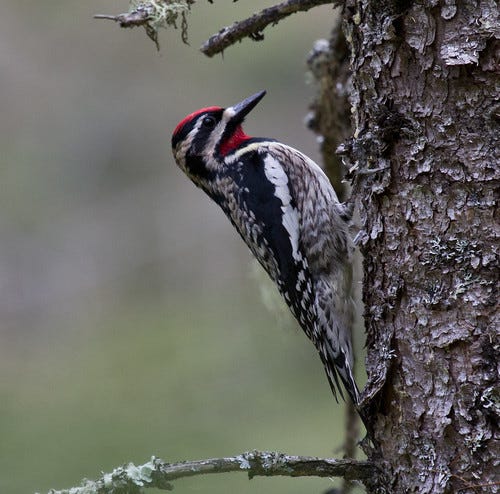
On Sunday, I was birding on Park Point during a major migration event. Blackbirds (mostly grackles) were coursing through constantly, as were Northern Flickers. My view of the sky was limited, but I still counted 154 flickers in little more than an hour and a half, every one of them and the blackbirds headed north.
Among the migrants streaming over, I picked out 10 Yellow-bellied Sapsuckers. I’d had one drumming in my backyard every day since Thursday. (Yesterday, I made a 7 1/2-minute recording of his arhythmic drumming and some calls that you can listen to here.) Both my individual sapsucker and a bunch of migrants are an auspicious sign of hummingbirds to come.
As much as I love Yellow-bellied Sapsuckers in their own right, it’s impossible for me to see one in April without thinking of Ruby-throated Hummingbirds. The two birds aren’t the least bit related genetically or taxonomically, and even though adult males of both species have brilliant red throats, one would never, ever mistake one for the other. But the two are tied inextricably together thanks to their sweet diets.
For much of the year, sapsuckers eat flying insects, ants, fruits, and nuts.
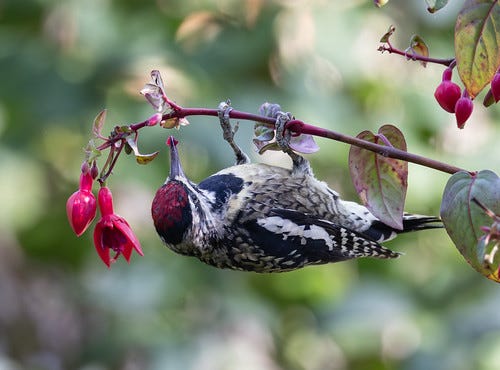
When sap starts running at winter’s end, the annual feast that gave them their name begins. We don’t need to worry about them competing with us for maple sugar—maple wood is too hard and the bark too deep for them to effectively tap. They go for softer wood and thinner bark. In my yard, they tap my aspen, apple tree, and mountain ash by drilling small shallow holes in a perfect circle around the trunk or a thick branch. They usually go back and forth between two or three different trees, returning to each to lap up sap and any insects attracted to it, and probing to keep the sap flowing.
But like our blood forming a scab over a cut or scrape, tree sap thickens and eventually hardens over sapsucker holes. Rather than deal with hard and sticky older holes, the sapsucker drills a new set directly above or below, and when those scab over, the sapsucker goes at it again. Some favorite trees may have dozens of rows of these holes, looking like they’d been riddled by a machine gun.
People often worry about the trees surviving, but in the same way that maple trees heal after being tapped by humans for syrup, sapsucker trees almost always heal and survive, too. The apple and mountain ash trees that sapsuckers had been riddling with holes long before we moved to Peabody Street 43 years ago are still doing fine, even as the sapsuckers continue to use them. (The aspen is just fifteen or twenty years old but is still going strong, too.)
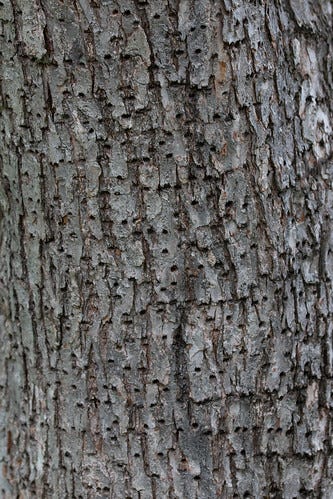
If you really must keep a sapsucker away from a vulnerable tree, wrap burlap around the area the sapsucker wants to drill. They apparently don’t like the feeling of burlap on their feet or how the sap sticks to the burlap.
As sapsuckers migrate north, they make a few lengthy stops en route, staying in a spot a week or more before heading on. At each stop, they pick a few trees to drill for sap, as they will when they arrive at their breeding destination.
If you really must keep a sapsucker away from a vulnerable tree, wrap burlap around the area the sapsucker wants to drill.
Meanwhile, hummingbirds are beginning their migration before most nectar-bearing flowers are open in the central and northern states. They feed on tiny insects, bits of sap oozing from the tips of tree branches, and sap in sapsucker drill wells. To ensure a reliable supply of food during migration and when they arrive at their destination, the hummingbirds give the sapsuckers a head start of at least a couple weeks.
Like experienced birders, Ruby-throated Hummingbirds recognize sapsuckers in flight and are known to follow them to locate their sap wells. They’re not the only ones to exploit this nutritious, calorie-laden food during migration. At least 35 species of birds eat the insects attracted to sapsucker holes and the sweet sap—I’ve seen lots of Cape May Warblers at them, but also Yellow-rumped Warblers, both Golden- and Ruby-crowned Kinglets, and Eastern Phoebes. (Tragically, I’m never quick enough to get a photo of hummingbirds at sapsucker holes.)
During rainy or cold spells during migration, Cape May Warblers can be aggressively territorial about favorite food supplies. At sapsucker holes, I’ve witnessed them successfully chasing off both competitors and the actual founder of the feast—the much larger sapsucker. But I’ve also witnessed the very tiny Ruby-throated Hummingbird successfully chasing off Cape May Warblers and other birds while, oddly enough, never chasing the sapsucker. It’s possible that hummingbirds aren’t simply exploiting the sapsuckers but providing a service in return, defending drill holes against more voracious sap-lovers while the sapsuckers are at their other feeding trees.
I usually expect Ruby-throated Hummingbirds to return right around Mother’s Day. I’m headed out Thursday for nine days, until April 28, but since I’m seeing so many sapsuckers already, I’ll be setting up my hummingbird feeders immediately when I get home. They’ll probably return fairly close to the normal date, but if one does come early, I want him to feel welcome. Having a sapsucker in the yard will help.


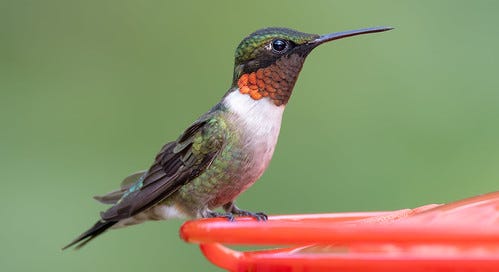



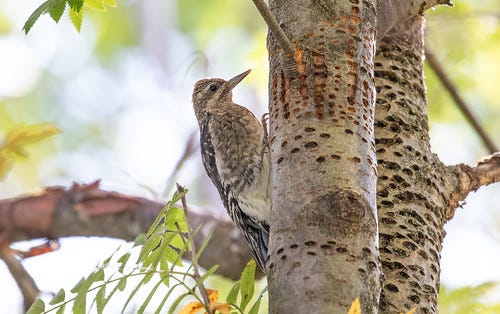

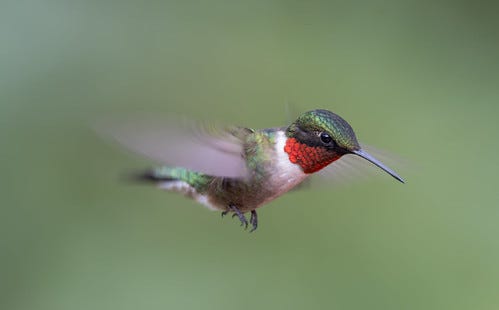
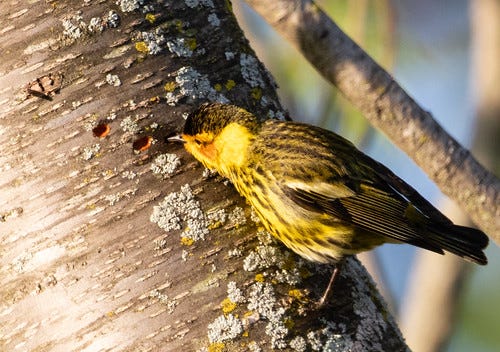
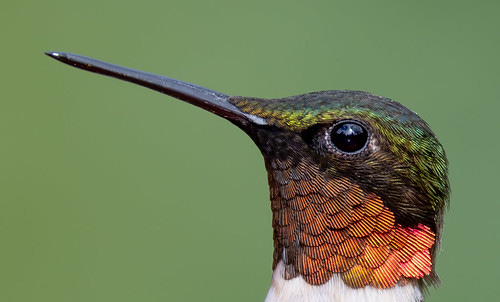
Very much enjoyed this article about one of my favorite birds. In my experience sapsuckers certainly will tap maple trees - the very ones that we have tapped ourselves when making maple syrup. They have their favorite trees too, resulting in bark turned black from all the fungus that grows over the dried up sap that on good days (cold nights, warm days) almost pours from the sap wells. Sadly, we seem to be a way station rather than a destination and the sapsuckers almost never stick around. By the time the hummingbirds and the Cape Mays arrive, the sapsuckers are gone. On the other hand, Yellow-rumped Warblers, like you say, are absolute demons for the sap wells - I've been looking for them every day (they're not here yet in NW WI) by staking out the sapsucker's favorite trees. I've also found overwintering butterflies - commas and Compton tortoiseshells - drinking from sap wells. How they find them is a mystery!